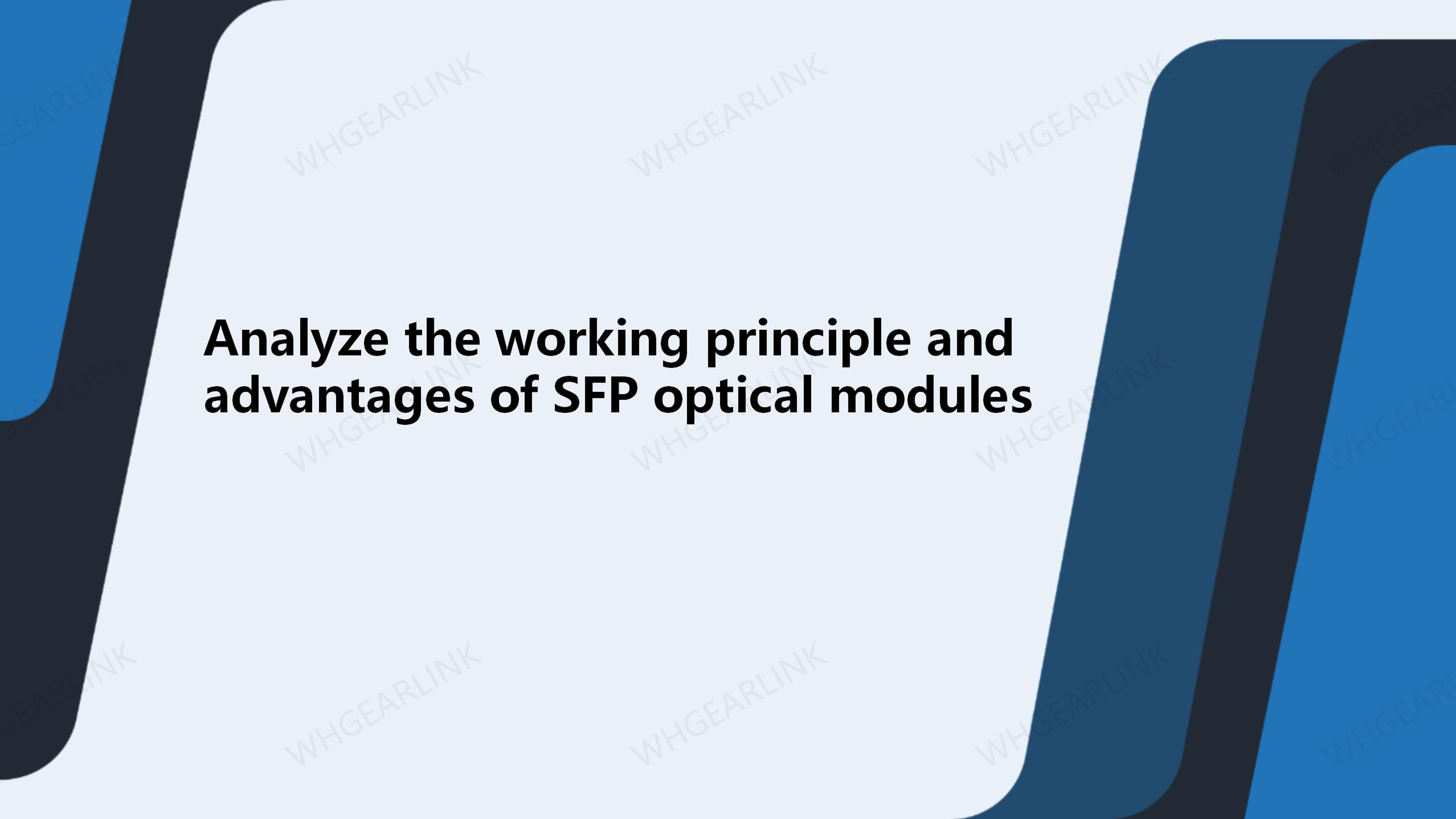This article will analyze the working principle and advantages of SFP optical transceivers. SFP optical transceiver is a commonly used photoelectric mutual conversion device and is widely used in the field of network communications. By deeply analyzing the working principle of the SFP optical transceiver, we can understand its role and advantages in data transmission. This article will also combine industry statistics to introduce in detail the parameter characteristics of SFP optical transceivers, including transmission distance, data rate and compatibility. By reading this article, readers will have a clearer understanding of SFP optical transceivers.
The SFP optical transceiver adopts a hot-swappable design and can be replaced or upgraded at any time while the device is running. Its working principle is based on photoelectric conversion and electro-optical conversion technology. When the SFP optical transceiver is connected to the device, the optoelectronic device converts the optical signal into an electrical signal for processing and transmits it to the link interface through the circuit. The electro-optical device then converts the electrical signal into an optical signal and sends it out. This process realizes the mutual conversion of optical signals and electrical signals, thereby realizing the transmission of the electrical signals of the device in the optical fiber network.
1. Flexibility and scalability: SFP optical transceivers are hot-swappable and can be replaced or upgraded without interrupting the operation of the equipment. This flexibility and scalability allow network administrators to flexibly deploy and upgrade according to needs, improving the manageability and maintainability of the network.
2. Diverse transmission distance options: SFP optical transceivers support a variety of transmission distance options, ranging from tens of meters to tens of kilometers. This selectivity makes the SFP optical transceiver suitable for networks with different distances, meeting the needs of various application scenarios.
3. High-speed data transmission: The SFP optical transceiver supports a 1G transmission rate, which can meet application environments such as home networks and small and medium-sized enterprise networks.
4. Strong compatibility: SFP optical transceivers adopt a standardized design to ensure their compatibility between different devices. This means that users can easily apply SFP optical transceivers to various brands and models of equipment without worrying about compatibility issues.
SFP optical transceivers are increasingly used in the field of network communications, and the market size is growing year by year and is expected to maintain a high growth rate in the next few years. This is closely related to the application needs of SFP optical transceivers in data centers, enterprise networks, telecommunications networks and other fields.
Through the analysis of this article, we understand the working principle and advantages of SFP optical transceivers. As a kind of photoelectric mutual conversion device, SFP optical transceiver has the characteristics of high-speed data transmission capability and strong compatibility. This has enabled SFP optical transceivers to be widely used and become an important part of the network communications field.


